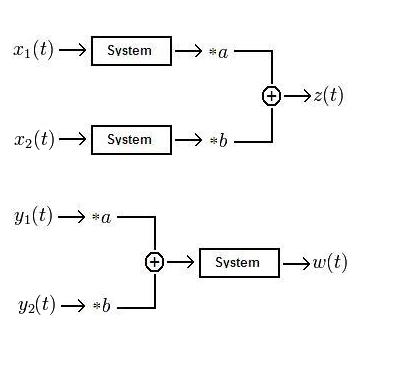(→Linear Systems) |
(→Linear Systems) |
||
| Line 8: | Line 8: | ||
<br> | <br> | ||
In other words, if in one scenario we have two signals put into a system, multiplied by a variable, then summed together, the output should equal the output of a second scenario where the signals are multiplied by a variable, summed together, then put through the same system. If this is true, then the system is defined as linear. | In other words, if in one scenario we have two signals put into a system, multiplied by a variable, then summed together, the output should equal the output of a second scenario where the signals are multiplied by a variable, summed together, then put through the same system. If this is true, then the system is defined as linear. | ||
| + | |||
| + | |||
| + | == Example of a Linear System == | ||
| + | Let <math>y(t)=x(t) \!</math>. Then: | ||
Revision as of 12:22, 11 September 2008
Linear Systems
Because we are engineers we will use a picture to describe a linear system:
Where $ a \! $ and $ b\! $ are real or complex. The system is defined as linear if $ z(t)=w(t)\! $
In other words, if in one scenario we have two signals put into a system, multiplied by a variable, then summed together, the output should equal the output of a second scenario where the signals are multiplied by a variable, summed together, then put through the same system. If this is true, then the system is defined as linear.
Example of a Linear System
Let $ y(t)=x(t) \! $. Then:


